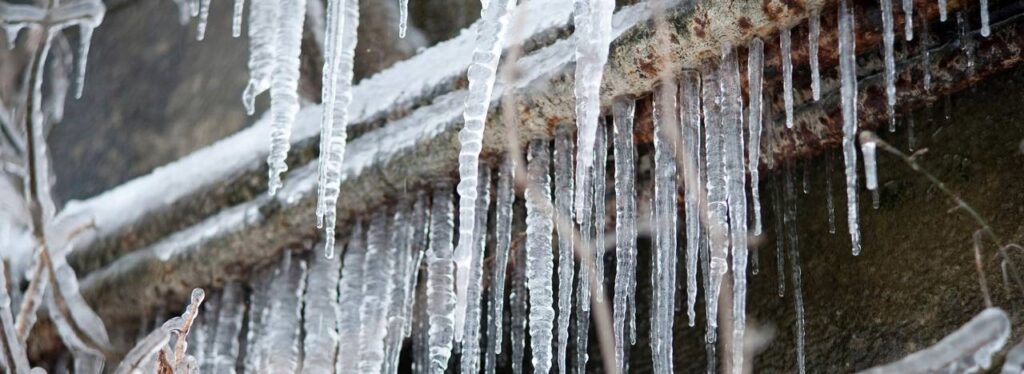The writer is making a few good points relating to How to prepare your home plumbing for winter weather in general in this article beneath.

Winter can wreak havoc on your pipes, especially by freezing pipelines. Right here's how to avoid it from happening and what to do if it does.
Intro
As temperatures decline, the risk of icy pipes boosts, possibly causing pricey repair work and water damages. Recognizing exactly how to prevent icy pipes is essential for property owners in cool climates.
Avoidance Tips
Protecting vulnerable pipelines
Cover pipes in insulation sleeves or utilize warm tape to shield them from freezing temperatures. Focus on pipes in unheated or external areas of the home.
Home heating techniques
Keep indoor rooms effectively heated, especially areas with pipes. Open up cabinet doors to allow warm air to distribute around pipelines under sinks.
Just how to determine icy pipelines
Seek lowered water circulation from taps, uncommon smells or sounds from pipelines, and noticeable frost on revealed pipes.
Long-Term Solutions
Structural adjustments
Consider rerouting pipes far from outside wall surfaces or unheated areas. Add extra insulation to attic rooms, cellars, and crawl spaces.
Updating insulation
Purchase top notch insulation for pipes, attics, and wall surfaces. Appropriate insulation helps keep regular temperatures and minimizes the risk of icy pipes.
Securing Outdoor Pipes
Garden hose pipes and exterior faucets
Detach and drain pipes garden pipes prior to winter season. Install frost-proof spigots or cover exterior taps with insulated caps.
Comprehending Icy Pipelines
What causes pipes to ice up?
Pipelines freeze when exposed to temperatures below 32 ° F (0 ° C) for expanded periods. As water inside the pipes freezes, it expands, putting pressure on the pipeline walls and potentially causing them to break.
Threats and damages
Icy pipelines can lead to water system disturbances, home damage, and expensive repair work. Burst pipelines can flooding homes and trigger substantial architectural damage.
Signs of Frozen Pipes
Recognizing icy pipes early can stop them from rupturing.
What to Do If Your Pipelines Freeze
Immediate actions to take
If you believe frozen pipelines, keep faucets available to alleviate stress as the ice melts. Make use of a hairdryer or towels soaked in warm water to thaw pipelines slowly.
Final thought
Preventing icy pipelines requires aggressive measures and quick feedbacks. By understanding the causes, indications, and safety nets, homeowners can safeguard their pipes during cold weather.
5 Ways to Prevent Frozen Pipes
Drain Outdoor Faucets and Disconnect Hoses
First, close the shut-off valve that controls the flow of water in the pipe to your outdoor faucet. Then, head outside to disconnect and drain your hose and open the outdoor faucet to allow the water to completely drain out of the line. Turn off the faucet when done. Finally, head back to the shut-off valve and drain the remaining water inside the pipe into a bucket or container. Additionally, if you have a home irrigation system, you should consider hiring an expert to clear the system of water each year.
Insulate Pipes
One of the best and most cost-effective methods for preventing frozen water pipes is to wrap your pipes with insulation. This is especially important for areas in your home that aren’t exposed to heat, such as an attic. We suggest using foam sleeves, which can typically be found at your local hardware store.
Keep Heat Running at 65
Your pipes are located inside your walls, and the temperature there is much colder than the rest of the house. To prevent your pipes from freezing, The Insurance Information Institute suggests that you keep your home heated to at least 65 degrees, even when traveling. You may want to invest in smart devices that can keep an eye on the temperature in your home while you’re away.
Leave Water Dripping
Moving water — even a small trickle — can prevent ice from forming inside your pipes. When freezing temps are imminent, start a drip of water from all faucets that serve exposed pipes. Leaving a few faucets running will also help relieve pressure inside the pipes and help prevent a rupture if the water inside freezes.
Open Cupboard Doors
Warm your kitchen and bathroom pipes by opening cupboards and vanities. You should also leave your interior doors ajar to help warm air circulate evenly throughout your home.

Do you really like reading up on How To Avoid Freezing Pipes? Try to leave a remark directly below. We would be pleased to find out your thoughts about this post. In hopes that you visit us again in the near future. In case you enjoyed our page if you please make sure you remember to pass it around. Thanks so much for going through it.
This Resource